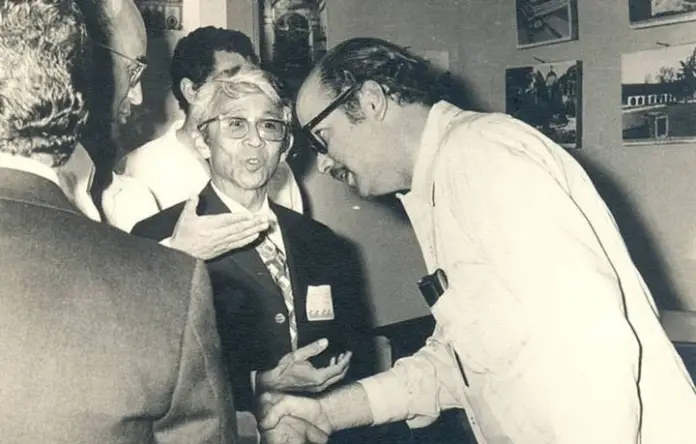This October 8, Baja California Sur celebrates the fiftieth anniversary of having been legally recognized as a free and sovereign state, with political and governmental autonomy.
The conversion of territory to state, along with Quintana Roo, was made official on October 8, 1974, with its decree in the Official Journal of the Federation (DOF), signed by the then president of Mexico, Luis Echeverría Álvarez.
It was published in the Official Gazette of the State Government (BOGE) of Baja California Sur, on October 20 of the same year. Before that date and since 1930, it was known as the Southern Federal Territory of Baja California.
The federal territories were regions that, when federalism was established in 1824, did not have the population or sufficient resources to become states and were administered by the federal government. They did not have autonomy and their governor was appointed by the president himself.
In 1970, according to the National Institute of Geography and Informatics (INEGI), Baja California Sur had 128,019 inhabitants. For the 2020 census, 50 years later, 798,447 inhabitants were counted, a growth of 623%. Although at the national level, it is the second least populated in the country.
Nearly 50 years after its conversion, on August 20, 2018, the Congress of Baja California Sur declared the piece by the authors Domingo Valentín Castro Burgoin (lyrics) and Alfredo Clayton Hernández (music) as the official state anthem, as a result of a public call.
For 50 years, Baja California Sur has been governed four times by the Institutional Revolutionary Party (PRI), twice by the Party of the Democratic Revolution (PRD), twice by the National Action Party (PAN) and currently, the first Morena administration.
ITS ORIGINS: THE FUS AND LORETO 70
The key social movements that promoted this cause were the Frente de Unificación Sudcaliforniano (FUS), headed by Francisco Cardoza Carballo and founded in 1945, whose central axis was to promote nativism as a requirement to be governor.
They fought for the reinstatement of municipal life, the access of natives to high-level public positions and a greater focus of the federal government on the industrialization and development of the region.
Francisco J. Múgica
The governor of the territory, Francisco J. Múgica (1940-1945) allowed its dissemination and resigned before President Miguel Ávila Camacho to pressure the appointment of a native. He appointed his successor, Agustín Olachea Avilés, with a cabinet of fusista origin.
In the transition from military to civilian governments, the Association of Paceño Students in Mexico, led by Rubén Cardoza Macías, decided to fight since 1963 to lay the foundations that would allow “the conversion of the Territory of Baja California into another state of the federation.” This gave rise to the “Youth Alliance for the Free and Sovereign State and Governor with Roots” in 1969.
In addition, the Loreto 70 school of thought, based on these concepts, was led by the journalist Félix Ortega from the publication El Eco de California, during the government of Hugo Cervantes del Río (1964-1970) and culminated with a project of reforms to the Political Constitution in a Territorial Magna Assembly, held on October 11, 1970.
During the government of Félix Agramont Cota (1970-1975) the foundations were laid for the conversion of the territory into a state, which culminated with the election of Ángel César Mendoza Arámburo (1975-1981) as the first constitutional governor elected by the people of Baja California Sur.
The triumph of this struggle is narrated by the historian Domingo Valentín Castro Burgoin, in his work “The historical process of the conversion of Baja California Sur into a Free and Sovereign State”, published in 2014.
CONSTITUENT LEGISLATURE
After the conversion to a state, the Constituent Legislature of the Congress of Baja California Sur was established, in charge of drafting the state Political Constitution.
It met from November 25, 1974 to January 9, 1975, made up of seven proprietary deputies, all elected by relative majority and PRI militants:
Armando Aguilar Paniagua (District I), Armando Santiesteban Cota (District II), Armando Trasviña Taylor (District III), Fernando Inés Cota Sández (District IV), Eligio Soto López (PRI), Manuel Davis Ramírez (PRI) and María Luisa Salcedo de Beltrán (District VII).
CIVIC CEREMONY FOR THE 50TH ANNIVERSARY
On Tuesday, October 8, 2024 at 6:00 p.m., Baja California Sur will celebrate the central event of the 50th anniversary of its conversion in a ceremony in the Plaza de la Reforma of the Government Palace as the official venue to carry out the solemn session.
Deputy Eduardo Van Wormer, president of the Board of Government and Political Coordination of the State Congress, declared to El Sudcaliforniano that the fiftieth anniversary act will be the beginning of other commemorations, such as the installation of the Constituent Congress and the promulgation of the first constitution of Baja California Sur.
The Constituent Congress delivered the new Charter to the state executive on January 9, 1975 and it was promulgated by him on the 15th of the same month.
Deputy Guadalupe Saldaña Cisneros, of the PAN, supported the proposal and stressed that it is a fundamental date for the social, political and economic life of the state.
Source: elsudcaliforniano






